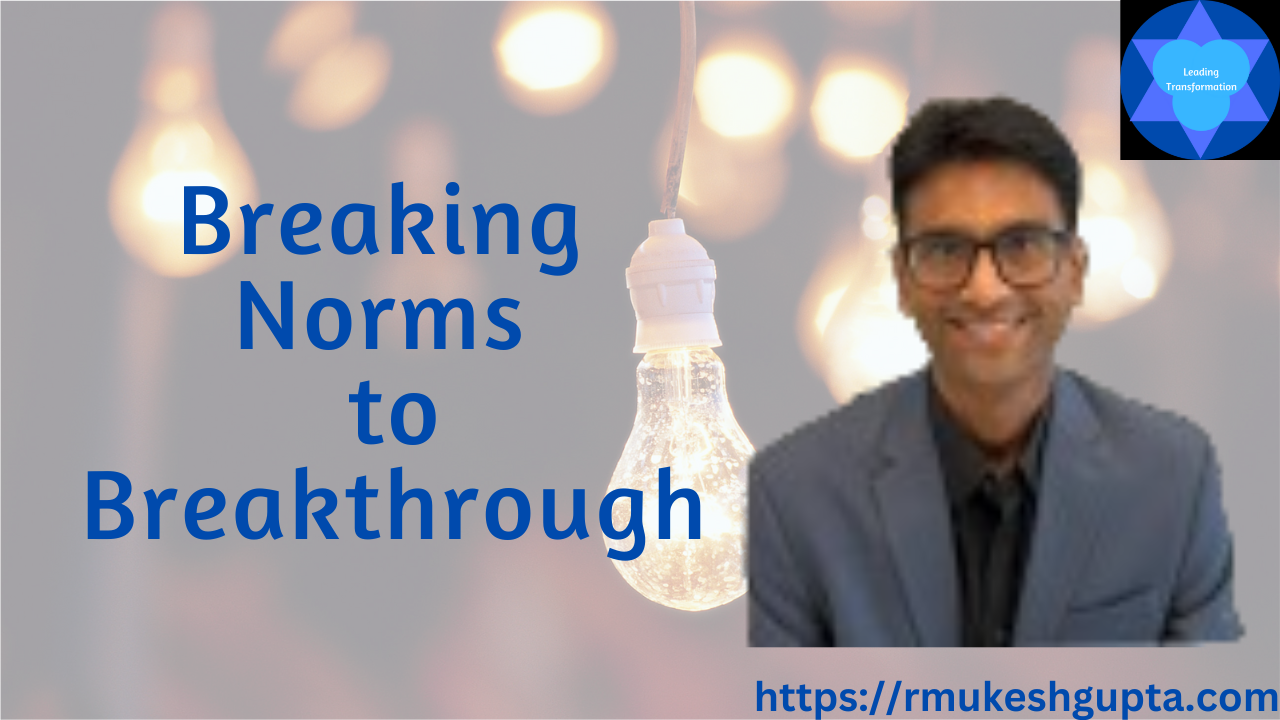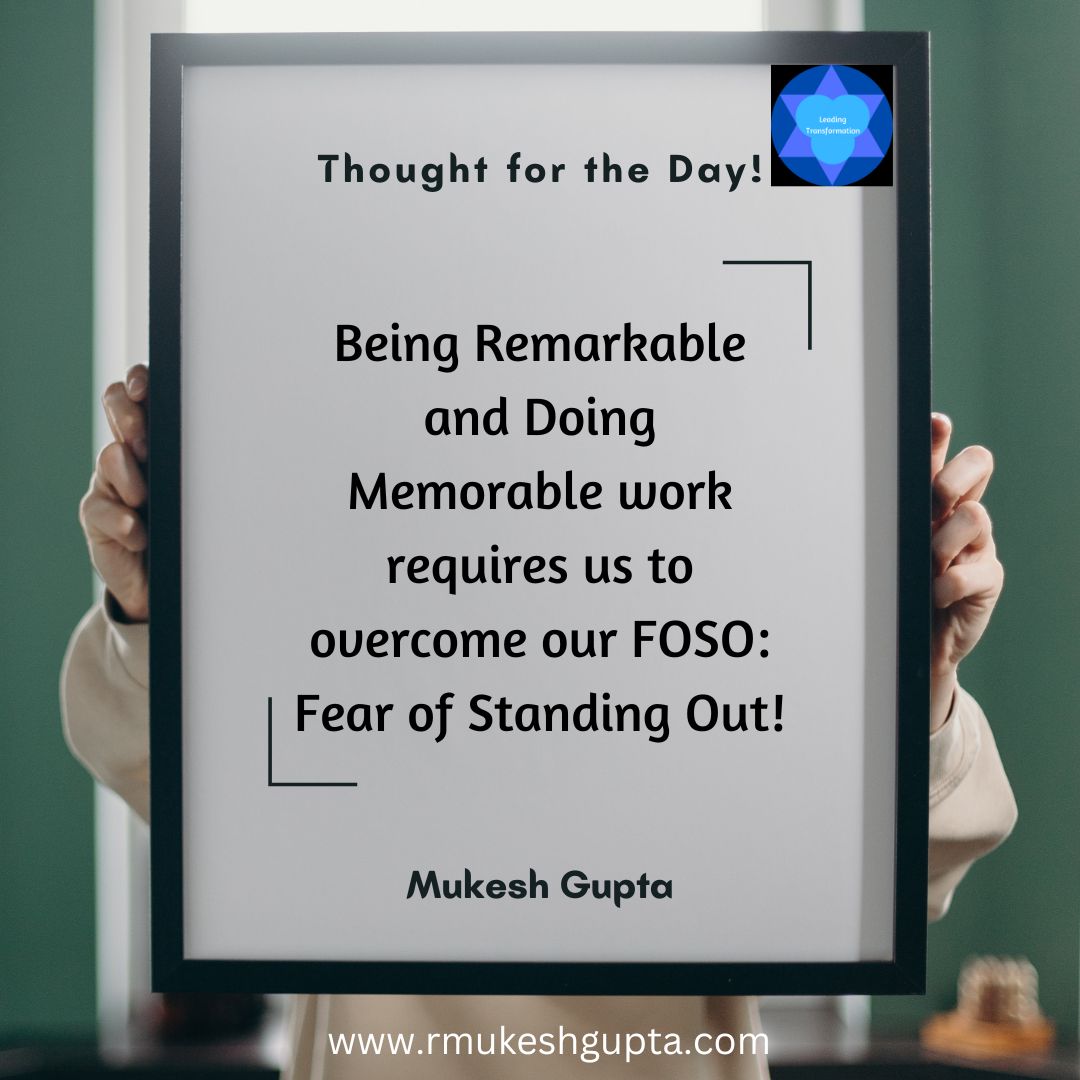I was at a tech startup event last week and as is at all these events, there was a discussion about how do you build new products or services that have a good chance at success.
I have learnt from my personal experience and from observing a lot of successful and not so successful startups that every entrepreneur trying to create a new product or service could follow the following process to have a good chance at building a successful product or service:
Step1: Know thy user
My personal experience in having facilitated numerous innovation workshops and from observing some highly successful products and some not so successful products, I have come to the realization that there are only two kinds of people that you should build a product for:
- Yourself
- Someone you know really well.
Step2: Know their need (known or unknown to them)
Now, once you know the user for whom you want to build the product or service, you need to understand their world, their passions and problems, their likes and dislikes, their preferences and frustrations.
Then you pick something that frustrates them – frustrates them enough to take action if a solution is offered. So, the question is how do you know which one to pick from the countless number of things that could be frustrating your user?
Step3: Create and test a hypothesis.
You create multiple hypotheses or assumptions about the need that if solved would provide the highest value to the user. Then you design experiments to test these hypothesis. Based on the result of the test, you pick the assumption that seems to be the one which if solved, would prove to add most value to the user. You dont have to stop with the top assumption. You can continue to develop multiple assumptions.
Step4: Ideate
You then go out and develop ideas using the myriad techniques like brainstorming, brain-writing or Anticonventional thinking.
Once you have a list of ideas that you have generated, you need to start prototyping. Now the question that almost everyone asks at this stage is – “How do i pick the idea to move to the next stage? “.
You pick the idea that passes the Desirability, Viability and feasibility test.
- Desirability: The ideas should be desirable for the user. This is the most important criteria as this will help you in adoption of the idea.
- Viability: The idea should be able to help you achieve the result that you want to achieve (profitable, increase user-base, etc).
- Feasibility: You should be able to build and implement the idea. In my opinion, this is the last filter that you need to apply and if there is an idea that passes the first two tests but fails this, you should still look at developing the idea, assuming that you would be able to upskill yourself or outsource the development of the idea to someone who could actually make it work.
My experience tells me that if you are looking at breakthrough ideas, you need to pick the most audacious idea or the idea that would be the most attractive to the user, that you have come up with. This is so because it is much easier to take an audacious idea (that is attractive to your user and offers the possibility of a breakthrough innovation) work than it is to take and average idea and try to make it attractive.
One very important thing that you need to keep in mind is that you dont have to pick only one idea. You can develop multiple ideas and even create multiple versions or avatars of the idea to solve the need of your user.
Step5: Prototype
You then create cheap, quick prototypes of the ideas that you have picked. You can use paper prototypes, storyboards, play-acting or any other kind of prototype that is easy and quick to build.
One very important thing that you need to keep in mind is that you are building the prototype to elicit feedback on the idea. So, dont build something that is very polished or looks really slick. That kind of prototypes dont elicit any valuable feedback. We have seen that rough prototypes elicit the best feedbacks.
Step6: Test your prototype
You then invite your users to test the prototype. The test should be designed keeping in mind specific feedback that you need about the prototype.
Lets say, you want to test the usability of the idea. You should then give the prototype to the user and ask them to use or experience the same and observe. It is a great idea to also video tape their usage or experience. Study this video and try to figure out where and how they engage with the prototype and ask (What/how/why) questions to understand their engagement with the prototype.
Lets say, you want to test if the prototype actually solves the need of the user and if they would be willing to take action (buy, install, use). You then create a test that allows users to go through the experience and at the end of the exercise, observe their emotions (do they feel really good or are they still frustrated). Any reaction other than no reaction is good as it provides you valuable feedback about the prototype.
Based on the feedback, you either tweak the prototype then and there or invite the user to experience the same once you have the updated prototype soon. The trick here is to do it quickly and not wait for days. If after a few iterations, it is still not eliciting the reaction that you want to see, it is better to either drop the idea and pick the next idea or tweak the idea before doing the third round of prototyping.
If after two or three ideas, you still dont get the response that you are looking for (elation, surpise and happiness), maybe you are trying to solve the wrong need. You then start over the process again, until you get one of the three reactions to your prototype.
Step7: Build the beta version of your product
Once you are able to surprise or make your users happy with your prototype, you go ahead and build the product and release a controlled beta version. Your responsibility at this point in time is still to test if the semi-finished product is still eliciting the same kind of response from your beta users as the prototype did. This is a slightly larger group and once you have achieved this, you are ready for a full-scale roll-out.
Identify the early adopters (the first 5% of your user base) who want to stay on top of the industry or technology and invite them to try out your beta version.
Step8: Product Launch
There is a lot of research being done on how to launch your product for it to have the maximum success. You can find a ton of great information here on Patt Flynn’s podcast.
You can also find a ton of great information in the book Launch: An Internet Millionaire’s Secret Formula to Sell Almost Anything Online, Build a Business You Love and Live the Life of Your Dreams by Jeff Walker.
My personal recommendation is that you build in viral possibility into your product or service while building the product or service.
You can do this by incorporating a way to allow your lead users (Beta users or early adopters) to invite their friends to use your product.
Incentivize (instill a sense of pride in them for being able to help their friends and to look good) them for doing so. This is the best possible launch activity that you can do that can bring in the biggest amount of impact.
Step9: Improve the product
Building a successful product doesn’t stop with the launch. You now need to continue to improve your product or service based on the usage and feedback from the user community. This is the single most important thing that you could do to end up with a immensely successful product or service.
These is how I would develop a new product or service. How would you do it?




4 thoughts on “How to Build an Insanely Successful Product or Service”
Comments are closed.